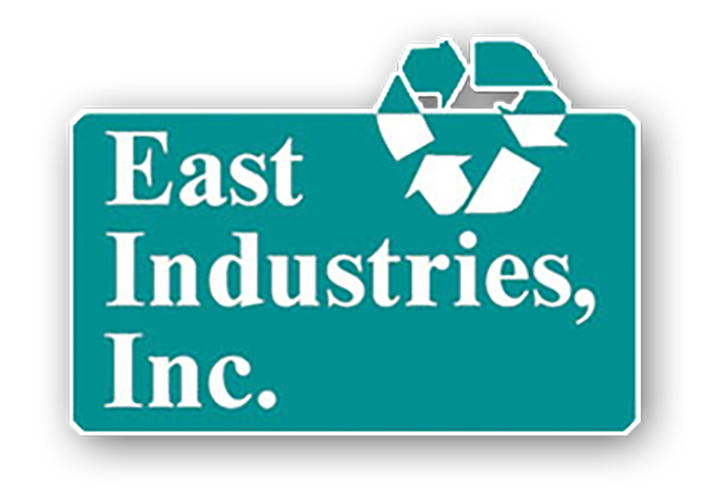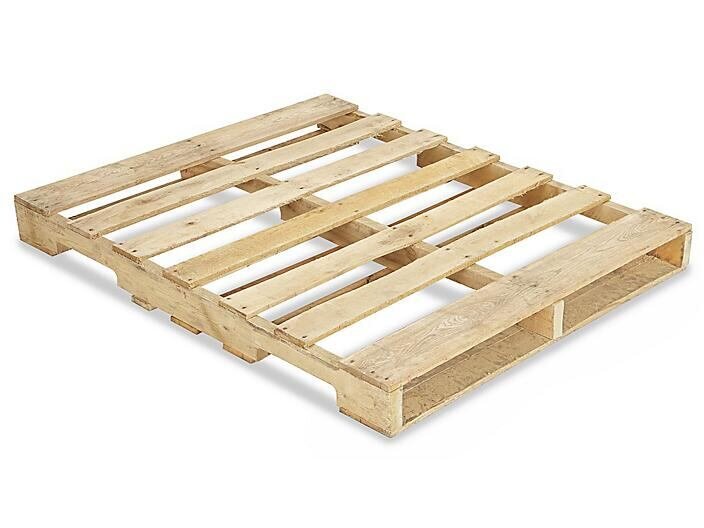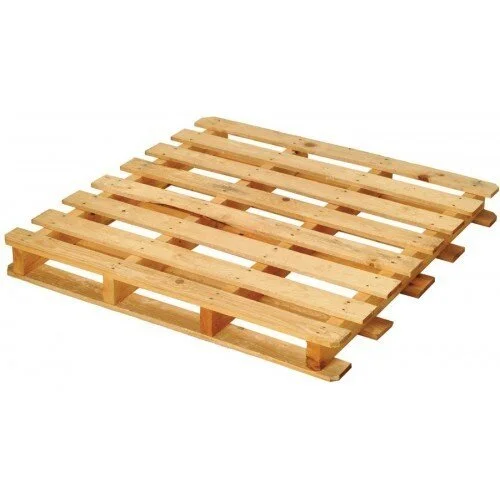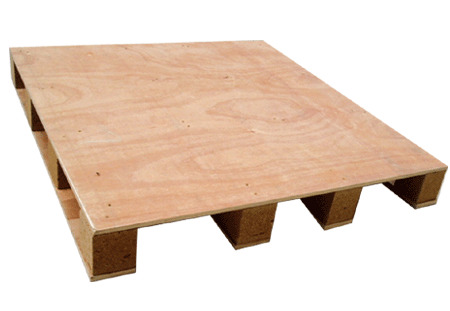
Whatever it is, we have a pallet to match
Our Pallets
East Industries offers new, recycled, and remanufactured pallets. While some companies, such as those distributing healthcare products, pharmaceuticals or foodstuffs, may require the use of new pallets, most companies are able to realize significant savings by shipping with recycled or remanufactured pallets.
New Pallets
With new pallets, no part of the pallet has ever been previously used, recycled or remanufactured. With no wear and tear, new pallets obviously look better, but more important, shippers can be certain that the wooden components have a cosmetically appealing appearance and a phytosanitary consistency.
Remanufactured Pallets
This type of pallet has been assembled completely from reclaimed lumber stripped from other pallets, or it may be a combination of new and recycled components.
Recycled Pallets
May also be known as RECONDITIONED or REFURBISHED. As the wise old saying goes, “Everybody drives a used car.” The moment you drive a new car off the lot, it’s used. The same is true for a pallet… the only time it’s truly new is the first time it leaves your loading dock.
Careless lift operators, overloading, and other causes of damage almost never ruin an entire pallet. Typically, replacing a few deck boards, blocks or stringers will bring a pallet back up to specifications. Our process includes transporting pallets back to our processing center, inspecting for damage, sorting by work required, removing damaged parts, and then making the necessary repairs – replacing damaged parts to return the pallet to structural integrity and appearance.
Unless your industry standards or legal requirements mandate the use of new pallets, from a cost standpoint it makes a lot of sense to utilize “recycled” pallets.
Heat Treated Pallets
East Industries offers heat treatment of pallets in accordance with the International Plant Protection Convention’s (IPPC) ISPM-15 phytosanitary guidelines. Wood in treated pallets meets debarked standards and has been heated to achieve a minimum core temperature of 56°C (132.8°F) for a minimum of 30 minutes.
East Industries’ pallets subjected to heat treatment will display the IPPC certification seal, often referred to as the “wheat stamp,” and will bear the initials HT as a part of our ID number, indicating full compliance with heat treatment guidelines.
Select the Pallet That Works Best for Your Operation
The pallet size and design you require may be determined by a number of factors, including; the size of your building and its doorways, warehouse rack space, semi-trailer width, product dimensions, use of forklifts or pallet jacks, and coordination with automated packaging and warehouse requirements. Pallet size is also a prime consideration in minimizing the amount of “air” you ship.
At this time, there are no universally accepted standards for pallet dimensions; however, in North America, the GMA (Grocery Manufacturers’ Association) pallet accounts for 30% of all new wood pallets introduced into the shipping system. A GMA pallet measures 48” long by 40” wide, and has notched stringers which allow for 4-way entry.
Most Common Sizes
The ten most common sizes of pallets used in the US are shown in the table below. (Reproduced from Wikipedia) The first dimension is the stringer length (support boards) and the second is the deckboard length. The more square a pallet is, the less likely it is to tip.
48” x 40” - Grocery, many industries
42” x 42” - Telecommunications, Paint
48” x 48” - Drums, Barrels
40” x 48” - Military, Cement
48” x 42” - Chemical, Beverage
40” x 40” - Dairy
48” x 45” - Automotive
44” x 44” - Drums, Chemical
36” x 36” - Beverage, Shingles
48” x 36” - Beverage, Shingles, Packaged Paper
Two-way or Four-way Entry
Entry refers to the number of sides of a pallet that can be entered by a forklift or pallet jack. While two-way entry pallets may be a little less expensive, the four-way entry offers more flexibility, especially in loading trailers where turning the pallet 90 degrees allows far better utilization of space, thereby lowering shipping costs.
Because a forklift utilizes relatively thin forks and stringers are generally notched or raised, it is able to enter either type of pallet from all four sides; however, oftentimes, a pallet jack, because its lifting wheels are built into the thicker forks, can only enter a four-way pallet from two sides, not all four.
Two Way Pallet
Designed to be lifted by the deckboards. In a warehouse, the deckboard side faces the corridor. For optimal cubage in a warehouse, the deckboard dimension should be the shorter. This also helps the deckboards be more rigid.
Four Way Pallet
Generally used for heavier loads. Forks go under stringers instead of deckboards. (Compare to piers (forks) that support floor joists (stringers), which in turn support the floor structure (deckboards) in a house
Pallet Types
Skid
A pallet having no bottom deck. Sometimes referred to as a platform. Not designed for stacking and may cause product damage if stacked. Generally the least expensive of pallets and may be considered expendable.
Single Wing Skid: No bottom deck and deckboards extend past the runners, or stringers.
Single Face Pallet
Decking material on top of pallet for product support with minimal structural support boards on the bottom. This is pretty much the industry standard. Double faced pallets are the exception and are rarely used except for some warehouse applications where complete deck coverage on top and bottom might beneficial.
Double Face Pallet
Double-face pallets have decks on both top and bottom of the pallet. This increases the strength of the pallet and helps distribute weight more evenly through the pallet.
Single Wing Pallet
Deckboards extend past the stringers on the sides, front and back. Extension of wings allows for stringers to be positioned closer to each other and increases overall strength of pallet.
Double Wing Pallet
Deckboards extend past the stringers on sides, front and back, on both the top and bottom.
Euro Pallet
Also known as block pallet or post pallet. This is a four-way entry pallet and is stronger than a stringer pallet. Normally a European standard, but it is being used more frequently in the United States, especially with companies exporting to Europe.
Solid Deck Pallet
May be block or stringer design and utilizes a single piece of decking material as opposed to multiple deckboards. Ideal for smaller products that might fall through openings between standard deckboards.










